GEAR TALK – Lets Talk About Lugs
The topic at most OCR events and on discussion boards revolves around the right shoe and aside from drainage issues, the grip associated with the lugs of a shoe are at the center of that conversation. Why, well no one wants to slip when running a muddy course. But do the size of your lugs really make a difference?
I have run races at all levels all over the country and have settled on one pair of shoes that I feel works in all environments. Arriving at this ideal pair of shoes came as the result of a lot of trial and error. While this shoe is ideal for me, the lack of big lugs gets a pretty disbelieving response when mentioned. Why? Because it does not have lugs that rival a soccer cleat.
So let’s discuss some of the shoes that I have used and reflect on the lugs of each shoe to get a better idea of exactly why the lugs on a shoe matter less than __________ .
New Balance Zero
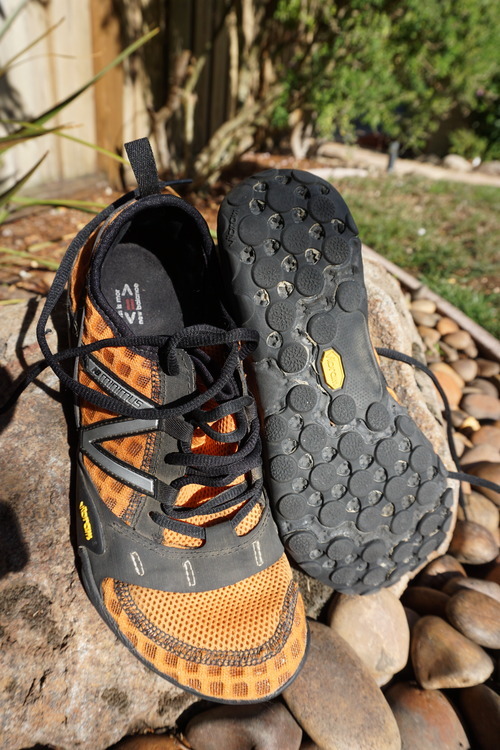
These were the first shoes that I used to run an OCR event in. I trained in them and raced in them and loved them. They were light, had a zero cm drop (hence their name), shed water like no other and stuck to almost everything. I stopped racing in these shoes because of some serious calf issues associated with barefoot running and most definitely not due to their traction. I mean look at those gnarly lugs.
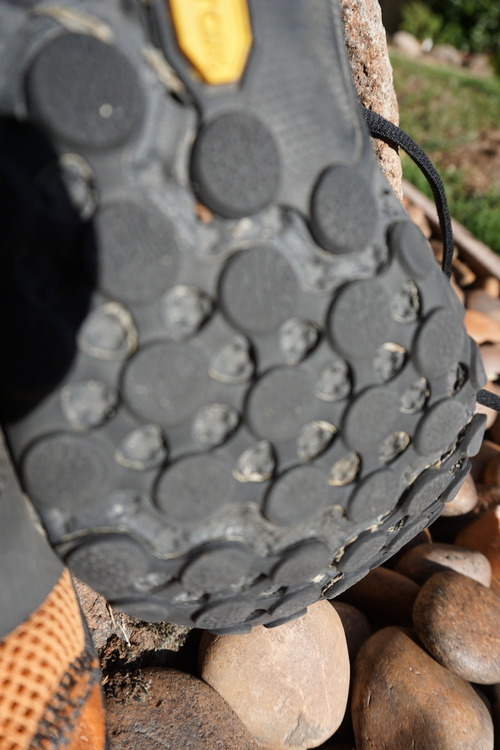
Here is why these worked well. First, they conform to your foot rather than being inflexible due to a rigid sole. This allows them to conform to where your foot is applying pressure to the ground and not have it equalized due to a plate in the sole. This allows for traction where you are applying it. Second, the rubber is applied to the ground evenly while the groves allow excess to be moved away from the rubber – and most importantly, the mud does not have an opportunity to stay lodged in the shoe. And this point is where the success of a OCR shoe comes into play – this is the blank we are filling in. If the rubber can continually meet the road, then the size of the lugs matters less.
Asics Gel-Scout
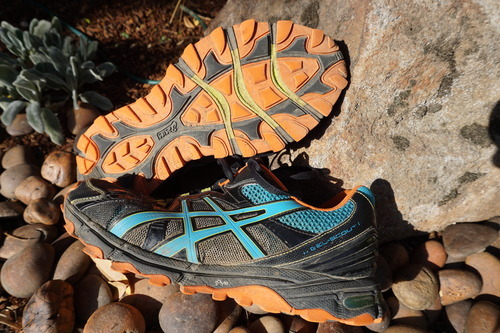
These shoes mimic the typical trail shoe sole. They are approachable, do not look over powering and for the most part handle most well groomed trails really well – that is until they are muddy.
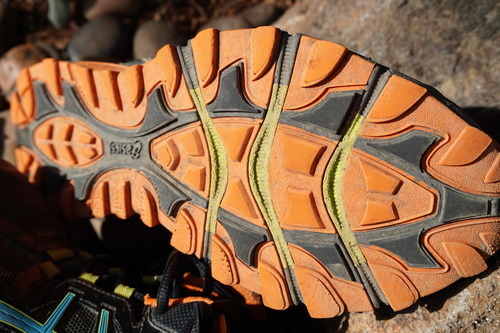
Their design is to promote flexibility and sure even foot ground contact. They will hold you on a damp trail but nothing overly wet. They are in a sense a street running shoe converted with a palatable and not overly aggressive sole. They shed the mud from the shoe OK but tend to flatten the mud without moving from under itself thus causing a sloppy mess – unlike the New Balance Zero’s above.
Salomon Speed Cross 3
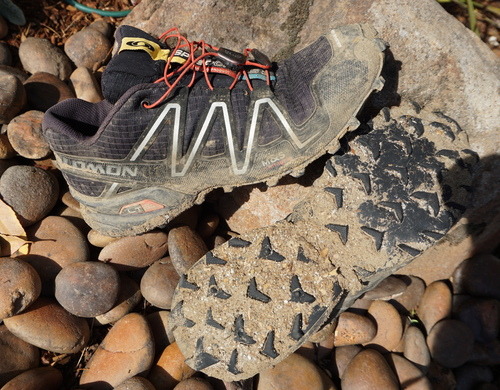
This shoe can be found at every OCR race in the world. It comes in men’s and women’s sizes and colors and has been adopted as one of the few unofficial OCR shoes. And look at those lugs (mind you these have a couple hundred miles on them).
Aside from horrible draining, these shoes run like cleats. They should almost be sold as a soccer or football shoe. They stick in the mud like a NASCAR running around the track. The chevron pattern allows for great uphill traction, good downhill give and the ability to not get too clogged up – sort of.

As you can see from these photos, there is dirt lodged in the shoe. This is what was left after leaving the muddy trail, returning to my car, driving home and walking to my front door. This dirt remained after all of this walking on asphalt and sitting out for a week. So there is nothing sticking at the ball of the foot; however, the toe and heal are complete caked – offering no traction at all. So while I agree that they are one of the best options available, they prove that big lugs are not the solution yet a better alternative than a street shoe converted to the trail.
I still wear these on really wet and muddy trail runs but do not use them for racing. In light watery mud they are fine but the other drawback of big lugs is the about of rubber that meets the ground on more solid surfaces. For example, how much of this shoe will be in contact is you are crossing a creek via a wet felled tree? 3-4 lugs making up a square inch of rubber. What happens if you begin to teeter on the log – you’re down to 2 lugs – half an inch! Happy swimming.
Salomon Fell Racer
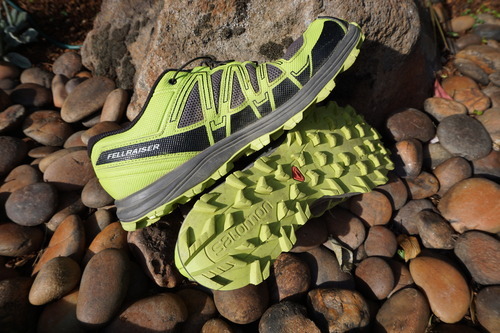
I offer up the Fell Racer as it is quickly becoming the kid brother / sister of the Speed Cross. It has the same sole – and same issues but it has a much more breathable upper. While it may see like this breathable upper will drain better – it doesn’t. Quite the opposite. These shoes will suck up water and mud like a sponge and feel like you have ankle weights on after their first dip in the mud.

I use mine as alternative trail training shoes. The breath-ability is appreciated, the extra padding helps cushion my run, the lugs hold onto loose gravel and soft / damp ground and they provide good grip on rough rocky terrain. I will never race in them again.
Asics Fuji Gel Racer
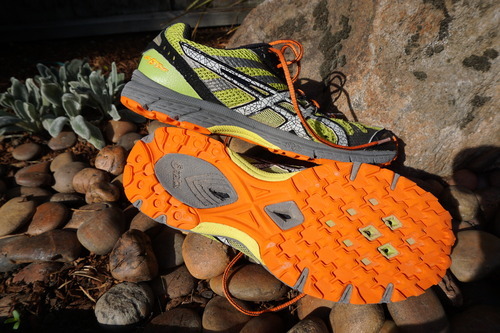
Well I have saved my favorite for last. There are many reasons why but let’s start with the lugs. The pair pictured here are near their end of life for me. They likely have 600 miles on them and their lug pattern is beginning to wear enough that I won’t count on them for many more races. This being said, they were on my feet for the Vermont Spartan Championship Ultra Beast, the OCR World Championships in OH, and the World’s Toughest Mudder 24-hour championship.
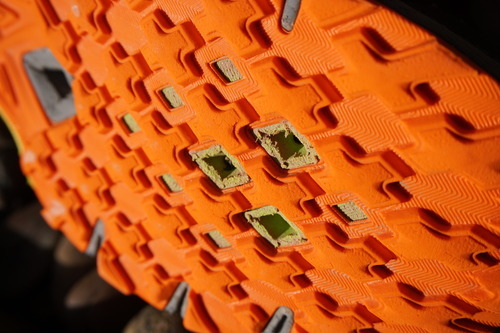
The sole offers a similar waffle pastern to that of the New Balance Zero mention in the beginning of this post; however, the ground contact points are more prevalent (while not overly so) and taper like inverted pyramids. This allows plenty of rubber to meet the road while squishing little of it underneath. The channels push mud from under the shoe while trapping just enough to use as extra traction. Once the shoe is lifted, the mud just falls away from the shoe as there is nowhere to stick. Moreover is the fact that these shoes are still viable after so much wear.
Here in lies my point – large lugs are not what is important – lug size, shape, construction and ability to shed debris is.
A few other notes on why this has become my favorite and go to shoe for training and racing. The upper breaths extremely well while maintaining is shape and not allowing your foot to slip around. The shoe sheds water almost immediately and what little remains is able to be pumped out through the sides of the shoe as well as the ingenious drains in the bottom of the sole. They are light in weigh like a race shoe should be but offer a decent about of cushioning. They are narrow and nimble yet offer a good secure foot placement. They are a 4-6mm drop, so not minimalist but not overly high – a good balance. They last. I currently wear a pair that I have retired as an around town and gym shoe. It has an unknown amount of miles on it, has been through 1.5 seasons of racing and two World’s Toughest Mudders. Now that is longevity – plus they still look pretty good, minus a small tear on the side.
So there you have it!




